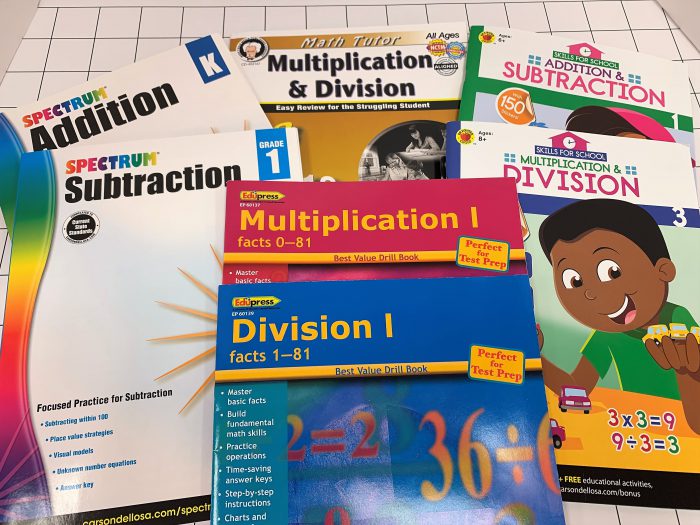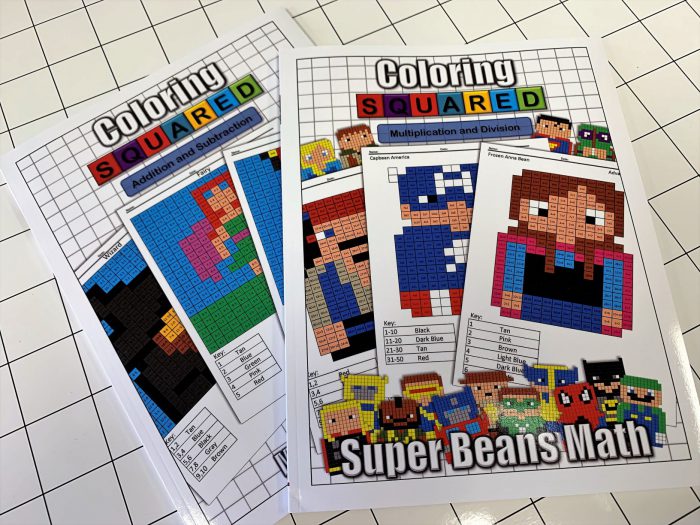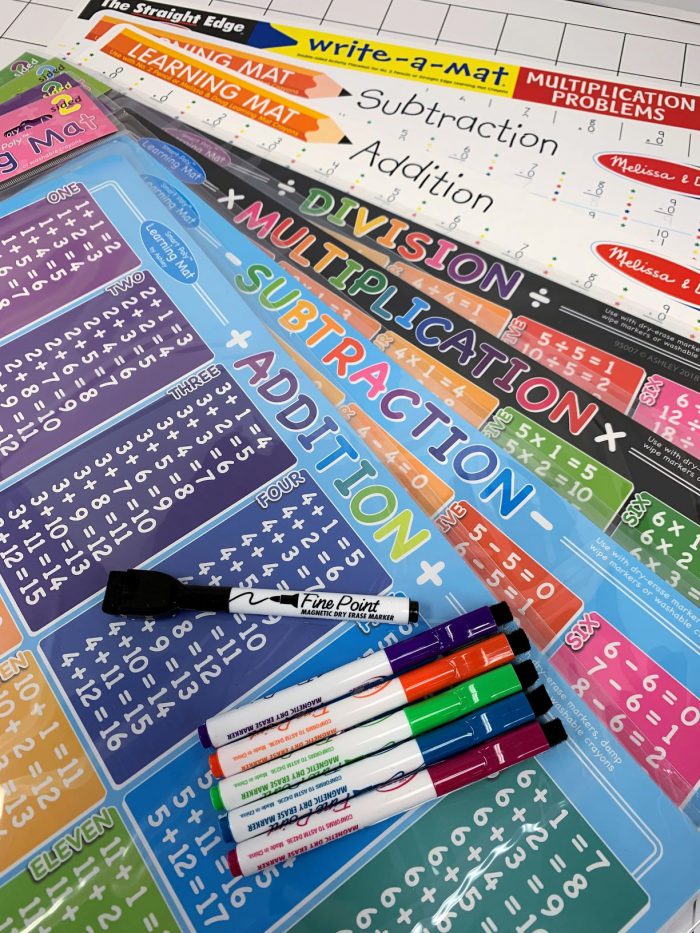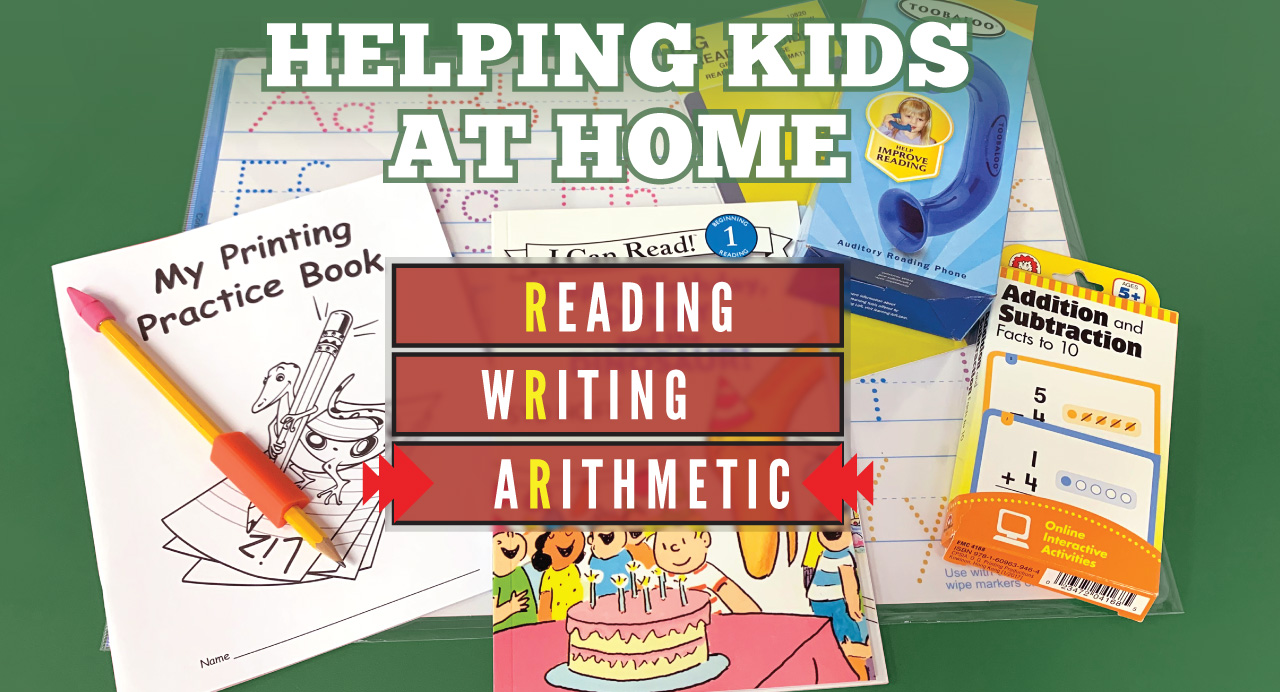
Helping Kids Learn at Home with the 3 Rs: Arithmetic
For the things of this world cannot be made known without a knowledge of mathematics.
Roger Bacon, English philosopher
This is the last of our series on helping your kids at home with the basics of academics: the 3 Rs. We touched on tools to help with reading and writing, and now we’re putting math in the spotlight! Although we carry products for everything from number discovery to algebra and geometry, we want to assist you in finding the right things to help your child get a solid foundation in math, starting with the 4 basic operations: addition, subtraction, multiplication, and division.
Math is probably the one subject many parents feel they aren’t equipped to teach. It may be because the method is unfamiliar and not at all how you learned math when you were in school, or you aren’t sure of the content your kids are learning in the grade they are in. The first step might be to figure out your child’s strongest learning style. While it may be difficult for a teacher to teach to every child’s strengths in a class setting, you can give your child the proper tools to teach to his strengths at home. Every subject can be taught with learning styles in mind, and math is no exception. You can offer enrichment at home with interesting activities and other tools to help kids of all ages sharpen their math skills, no matter how they learn!
Just the Facts
One thing is for sure, if you don’t help your kids get the basics of arithmetic down, then moving forward in math will be very difficult for them. If your child is struggling with a concept such as fractions or decimals, it may be time to rewind. Go back to solidifying basic math facts!
For this, flashcards are a favorite tool, and often the first parents ask for. These work well, especially for visual learners. Standard cards or the three corner variety are portable, inexpensive, and can be used alone or with a partner. Most of our flashcards come with teaching ideas, including how to turn them into games! Not only do flashcards use repetition, they also use active recall, both of which lead to better retention. Work on addition and subtraction one after the other to show the relationship between the two. Then multiplication and division.
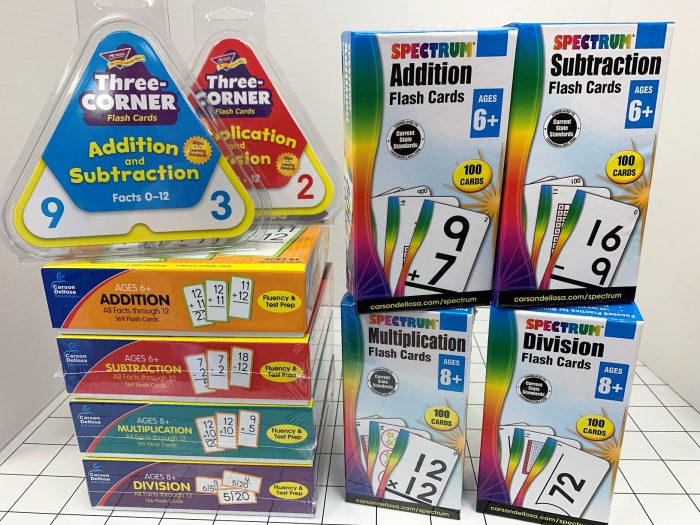
Open up a Workbook
You can find complete grade level curriculum or subject-tailored options in our wide variety of workbooks. Choosing a workbook with the matching grade should have the same type of work your student is currently working on in a school setting. Don’t hesitate to go up or down depending on your child’s level or needs. Workbooks put the concepts in a format they already know and will be using in class. Repetition can lead to retention. Also, your child will see their progress as they use up the book, and that’s motivating all on its own. This method requires you to check on progress, so the student doesn’t end up with a workbook full of repeated mistakes because they weren’t caught early on. For supplemental learning, get Coloring Squared with pixel art coloring puzzles that combine the fun of coloring with rigorous math fact practice.
Math Manipulatives
Manipulatives are always a fantastic way to make math more understandable for many kids. The classic abacus, different themed counters, or colorful blocks, help younger students understand the principles of addition and subtraction. When a child can “see” math, it helps connect something that might seems very abstract to a concrete idea. A number line can be used with Unifix cubes or counters and provides a visual component alongside the hands-on tools.
Math Fact Mats
Learning mats are handy to have for quick reference when doing homework or for memorization. Another nice visual, these can be used wherever the student is working. The mats have full math facts or space to work problems out directly on them. Use counting tools in conjunction with these mats to add the hands-on element. We like traditional counters and if you want to get more creative, you can use Unifix cubes, blocks, Legos, or Plus Plus building blocks as counters. The larger Plus Plus pieces are big enough to write numbers and symbols on in chalk marker or wipe-off markers and kids can “build” math problems with them.
Games + Electronics= FUN
Games keep students engaged while learning important concepts. We’ve got award-winning games made specifically to teach math concepts. Math doesn’t have to be all rote memorization. Dominoes, bingo, dice, cards and board games can all help children catch up and catch on to math. You can even create your own bingo games and purchase some counters to mark the cards. Or laminate them and use wipe-off markers. Electronic flash cards, Hot Dot pens and cards with immediate feedback, and fast-paced electronics can be just the ticket for some independent learning. There are so many great out-of-the-box ways to learn basic math!
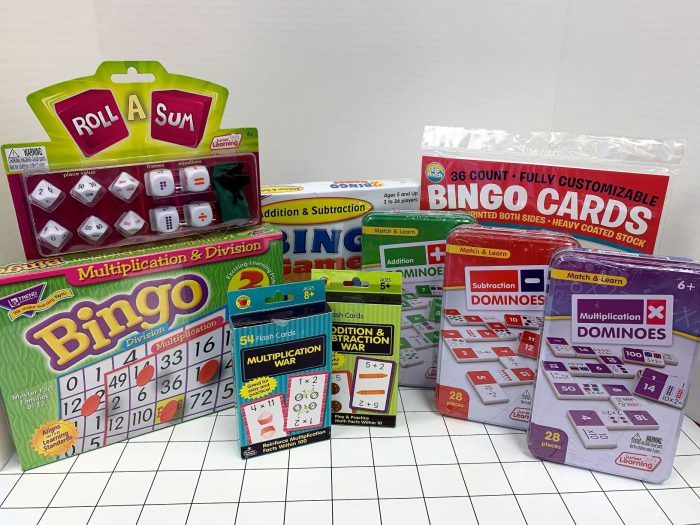
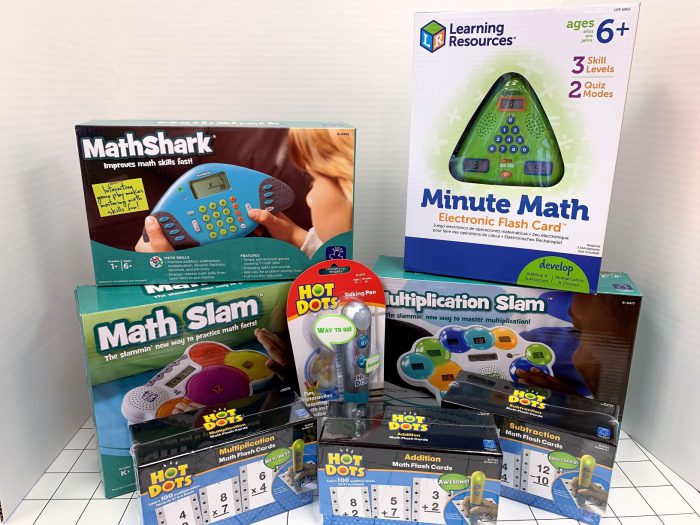
These are just a few ideas to help your kids excel in the fundamentals of math. Come into the store or shop on-line to see all of the other options we have to help you prepare your kids for success. Our staff can assist you in finding just what you need! Let us know in the comments what you have found to work well for your child in math!
